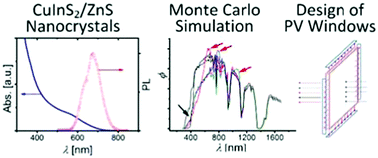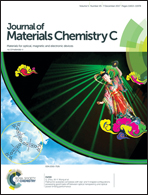Simulation study of environmentally friendly quantum-dot-based photovoltaic windows
Abstract
We modeled a prototype of a photovoltaic window, a passive source of clean energy, using a Monte Carlo ray-tracing method. We considered different geometries, material properties, and edge solar cells to determine the optimal conditions and possible electrical power yield. The modeled photovoltaic window prototype was based on colloidal luminescent low-toxic I–III–VI quantum dots (core/shell CuInS2/ZnS nanocrystals) with large Stokes shifts, high quantum yields, and tunable spectral properties. We also showed the influence of the quantum dot absorption/emission spectra on the resulting spectrum of transmitted light (i.e., the visual appearance of the photovoltaic window) using a chromaticity diagram.



 Please wait while we load your content...
Please wait while we load your content...